Day 1:
A magnitude-6 earthquake at Shizuoka Perfecture early in the morning caused all Shinkansens to delay for about 2-3 hrs. I was supposed to reach Hiroshima at 15:00 but the delay caused me to reach at 18:00. The earthquake spoiled my original plan to visit the Peace Memorial Park that afternoon. I had no choice but to change my plan to walking aimlessly around the streets near Hiroshima Station.
Fortunately, my day was saved by my dinner. The okonomiyaki was the best I have had so far in Japan.

Went to ひろしまお好み物語駅前ひろば, a designated area that is filled with nothing but okonomiyaki stores.
With so many stores to choose from, I just simply went with my sixth sense.

The shop's name is Sozo, そぞ
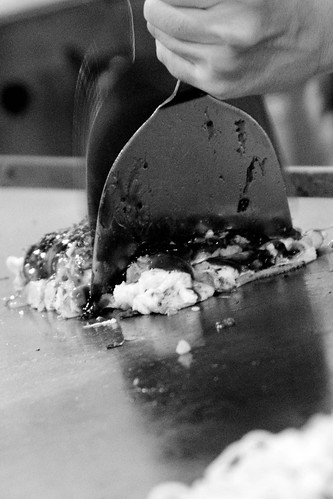
I picked the recommended, そぞ焼き

It was damn good!!! The only consolation for the day.
Day 2:
It's a must to visit Miyajima when one comes to Hiroshima.
World Heritage Miyajima Island
In December 1996, the World Heritage Committee officially inscribed Itsukushima Shinto Shrineas a World Cultural Heritage. The area designated for World Heritage comprises 431.2 hectares including the building of Itsukushima Shrine, the sea to the front, and the Mt. Misen Primeval Forest to the rear. This wide area covers approximately 14 percent of Miyajima Island
Miyajima as One of the Three Most Scenic Spots of Japan
In 1643, a Confucian scholar, Shunsai Hayashi, wrote a book based on his experiences as he traveled throughout Japan on foot. In his book, "Nihon Kokujisekikou" ("Observations About the Remains of Japan's Civil Affairs"), he bestowed his unqualified praise on the three locations, Matsushima, Amanohashidate, and Miyajima as "Three Most Scenic Spots of Japan".

Wild deers at Miyajima
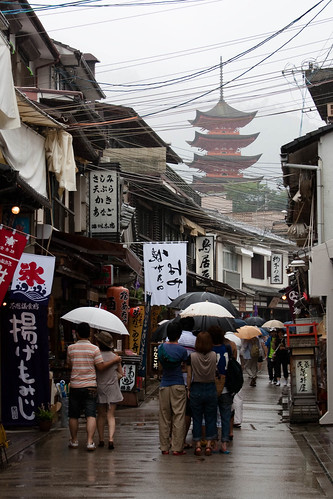
Machiya Street of Miyajima. It rained on and off for almost a whole day! I shall never trust weather forecast in Summer!
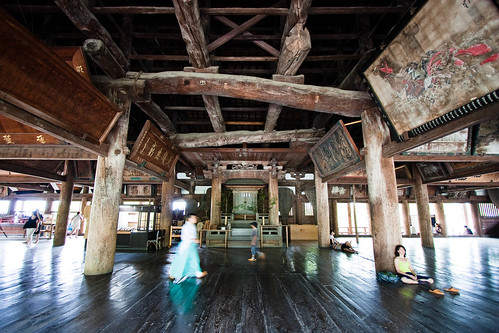
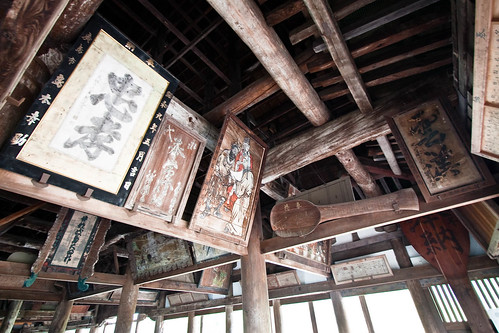
Senjokaku is a library of Buddhist sutras that Hideyoshi Toyotomi started to build in the Irimoya style for the repose of the war dead. However, the construction was suspended midway due to Hideyoshi's death, the structure still remains unfinished today.


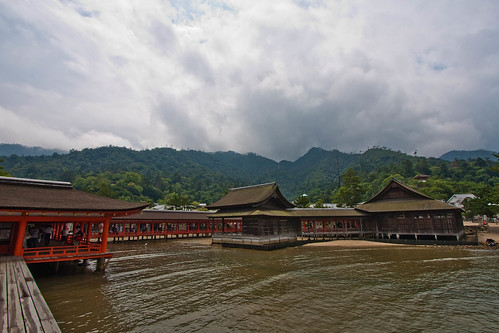
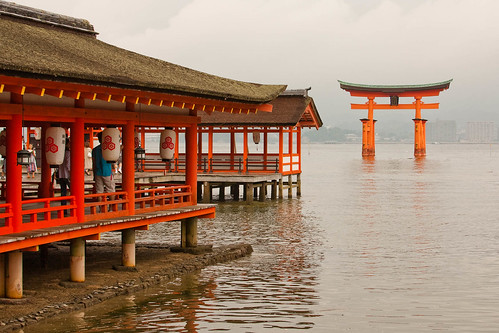




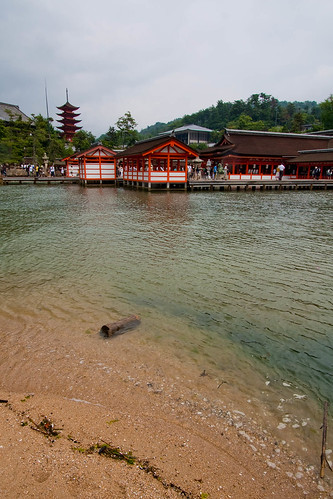
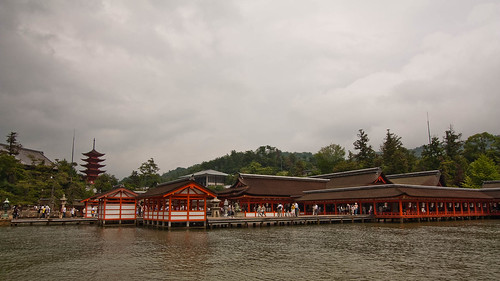
Itsukushima Shinto Shrine
Itsukushima Shrine is dedicated to the three Munakata goddesses, Ichikishima-hime, Tagitsu-hime, and Tagori-hime. These three goddesses are worshiped as gods of sea, traffic safety, fortune, and accomplishment.
The shrine is known for its unique construction, which displays the artistic beauty of the Shinden style of architecture. First built in 593, it was remodeled into the present grand structure by a powerful figure, Taira-no-Kiyomori, in 1168. Its placement on the water, beautifully framed by the mountain in the background, is testimony to Kiyomori's extraordinary vision and achievement.
Itsukushima Shrine is composed of a main shrine, a Noh drama stage, music rooms, halls and several other shrines arranged around it. All these structures are connected by corridors with the total length of about 300 meters.
The vermilion color of the shrine and of the O-torii is considered to keep evil spirits away. The shrine buildings are coated with vermilion lacquer, which is also efficient as protection from corrosion.
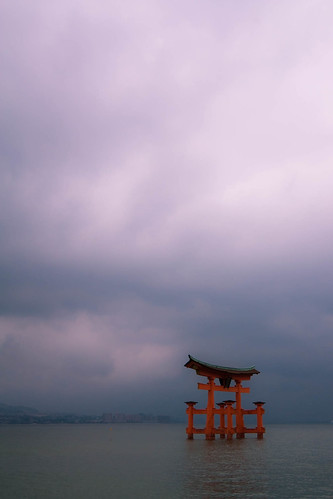
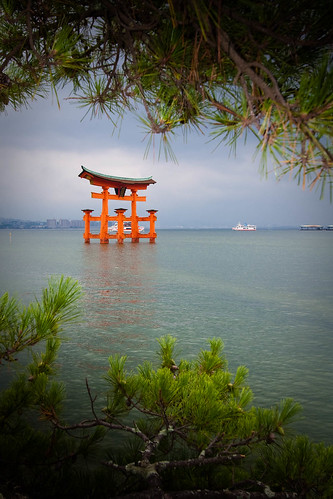


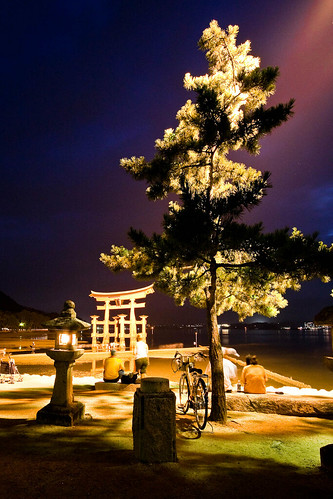
O-torii Gate
The O-torii Gate of Itsukushima Shrine is designated as a National Important Cultural Property. It's about 16.6 meters in height and weighs about 60 tons. Its roof, thatched with Japanese cypress bark, is 24.2 meters in length. The main pillars, which are 9.9 meters in circumference, are made of natural camphor trees, which the four supporting pillars are made of natural cedar. The present O-torii, which is the eighth since the Heian period, was erected in 1875. The top rail of the torii has a hollow space, and stones the size of one's fist are put inside as weights (7 tons in all). The gate stands under its own weight.
The cloudy sky was dull looking. I had to post-process some of them, to simulate the use of a purple filter. After a whole day of rain, I was hoping to catch some spectacular sunset shots of the torii, but there were just too many clouds for the sun to be seen.

Another shot of the torii with children in foreground.
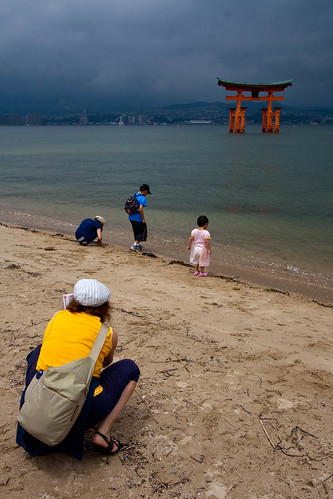
This photographer was trying to do what I did.
After some night shots of the torii, I immediately rushed down to the Peace Memorial Park to shoot some pics of the Atomic Bomb Dome at night. (I had to do this because I was leaving in the afternoon the next day.)

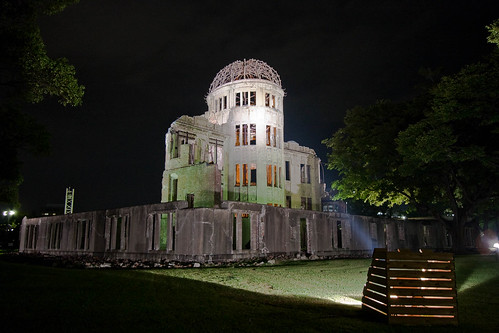

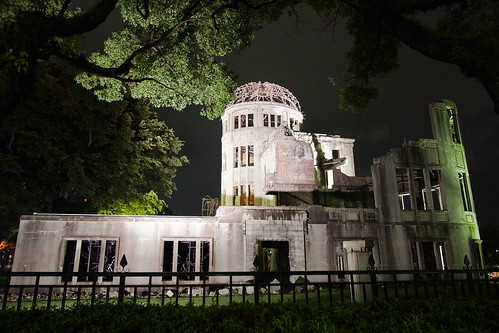
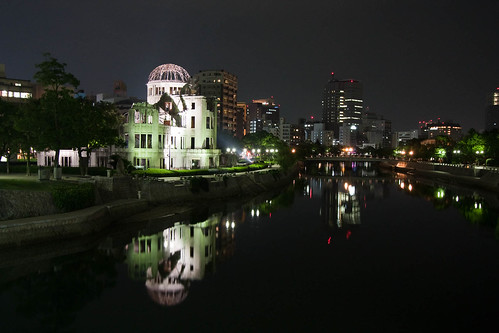
Atomic Bomb Dome.
With this, I ended my hectic day 2 at 22:30.
Day 3:
Original plan was to visit Iwakuni on this day, but the Shinkansen delay forced me to move my Peace Memorial Park plan to day 3 which means that I had to cancel my trip to Iwakuni.
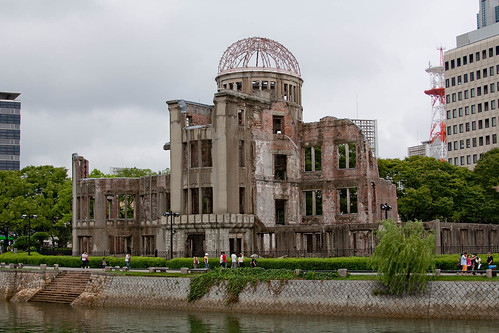
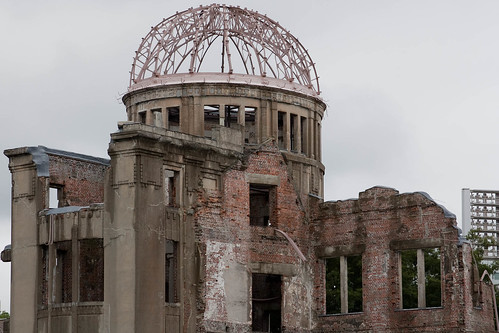
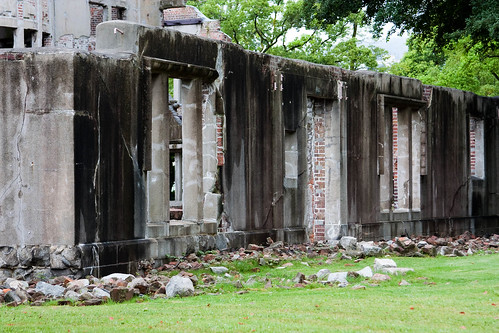
Day shots of the A-bomb Dome.
(Description of the A-bomb Dome is too long. Click on any one of the above pictures to read about the Dome.)
Yes you got it! It rained again on Day 3!! Sighzzzz...
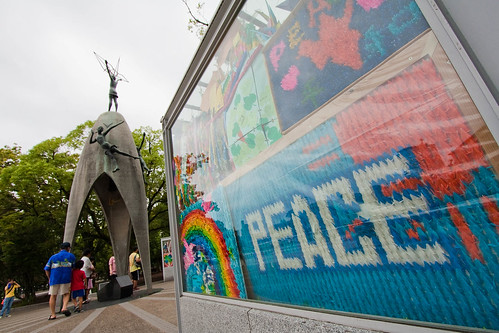
Children's Peace Monument
This monument stands in memory of all children who died as a result of the atomic bombing of Hiroshima. The monument was originally inspired by the death of Sadako Sasaki, who was exposed to radiation from the atomic bombing at the age of two. Ten years later, Sadako developed leukemia that ultimately ended her life. Sadako's untimely death compelled her classmates to begin a call for the construction of a monument for all children who died due to the atomic bomb. Built with contributions from more than 3,200 schools in Japan and donors in nine countries, the Children's Peace Monument was unveiled on May 5, 1958.
At the top of the nine-meter monument, a bronze statue of a young girl lifts a golden crane entrusted with dreams for a peaceful future. Figures of a boy and a girl are located on the sides of the monument.
The inscriptions on the stone block under the monument reads: "This is our cry. This is our prayer. For building peace in this world". On the surface of the bell hung inside the monument, the phrases "A Thousand Paper Cranes" and "Peace on the Earth and in the Heavens" are carved in the handwritting of Dr. Hideki Yukawa, Nobel Prize Laureate in Physics. The bell and golden crane suspended inside the monument are replicas produced in 2003.
The word PEACE was made using paper cranes.
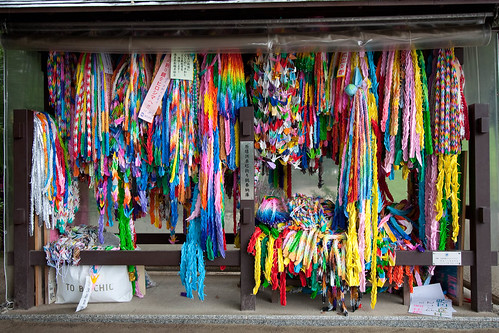
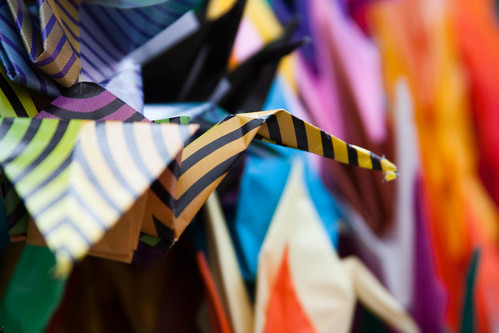
Peace Paper Cranes.

Bell of Peace
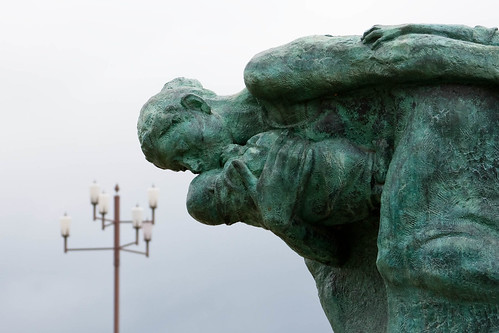
嵐の中の母子像 (which means Statue of Mother & Child in midst of Chaos?!!)

Centoaph for the A-bomb Victims
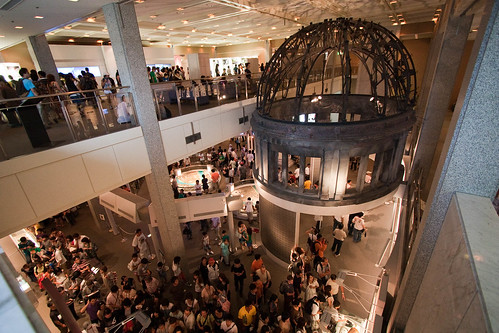
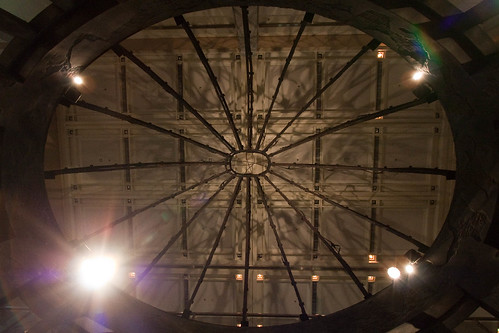
Peace Memorial Museum
The Hiroshima Peace Memorial Museum was designed by Kenzo Tange. Construction began in February 1951, and the museum opened on August 24, 1955.
The museum, of the peace memorial facilities conceived in accordance with the Hiroshima Peace Memorial City Construction Law, prominently displays such architectural features as the form of the pillars and the designed of the louvers. The museum was the first postwar building to receive widespread international acclaim and launched the career of Kenzo Tange. It was designated a National Important Cultural Property on July 5, 2006.

Scene of Atomic Bomb Tragedy

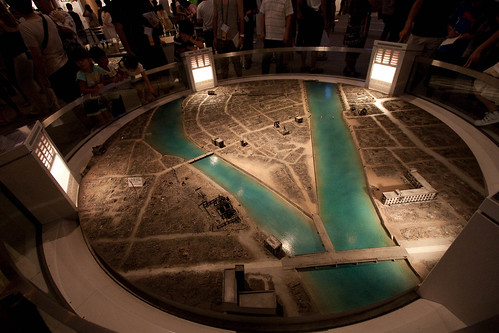
Before and After the Atomic Bombing
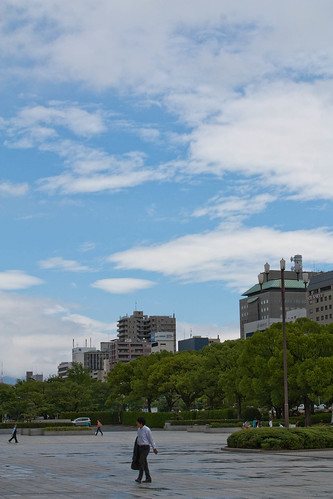
Finally I got clear sky...just when I was about to leave Hiroshima for Tokyo.
More pictures at http://www.flickr.com/photos/ksongk/sets/72157621905697179/